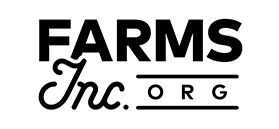Part of building a returning customer base is investing in a company brand; however, dispensaries in legal markets across are regulated differently state-by-state, limiting the options for traditional marketing, such as radio or TV ads, billboards, distribution of brochures in public spaces, and more.
In many states, retailers are permitted to sell merchandise donning cannabis company logos and other branding—such as clothing, mugs, rolling papers, vaporizers and other products. Retailers are using those opportunities to their advantage to increase awareness beyond their dispensary doors.
At vertically integrated Terrapin Care Station, with six adult-use retail locations throughout Colorado, merchandise is “one of the most critical ways of showing [the Terrapin Care Station] brand … outside of dispensaries,” says Tate Behning, the company’s vice president of marketing. “Merchandise … is one great way of substituting where you might otherwise want to show a product or talk about a product. … We like to encourage people to share themselves with our merch [on social media].”
Instagram users can be found sharing posts of themselves wearing a Terrapin Care Station-branded T-shirt with their slogan “Weed Loves You”—which Behning says is a customer favorite. The slogan, and/or the brand’s logo, is also printed on posters, lighters, rolling paper packs, sweatshirts, hats and other items.
Merchandise as a product category can either be used as a freebie to show customer appreciation, or an item for sale at a dispensary (or both). But, while virtually anything—from pens to mugs, clothing, keyrings, tote bags (the list goes on)—can be branded, it’s important to enter the category with a strategy.
At Eugene, Ore.’s Moss Crossing, co-founder and CEO Heidi Fikstad says, “Starting with that strong basis is super smart before you start ordering all different kinds of merch. You’re going to evolve as people. Your staff is going to evolve. People are going to have new and different ideas. You want to be able to run those ideas through a filter and make sure everything is still representing your brand in a really cohesive way.”
To convey the brand authentically, Behning says Terrapin Care Station establishes relationships with vendors who produce high-quality goods. “We don’t like to just do a cheap T-shirt,” he says. “We want to [offer] something that feels well that everybody looks at and goes, ‘Oh I’d wear that, I’d rock that all the time.’ … One of our featured vendors is a high school friend of someone, he’s done a great job and understands how important quality is to us, and we value that long-term relationship.” Additionally, Behning says they’re working to transition to only American-made merchandise, noting this is “easier said than done.”
Fikstad says that merchandise sales dipped a bit this year as the store wasn’t open to the public during the early days of the coronavirus pandemic; however, attaching merchandise to their loyalty program has helped encourage those sales, even without as much foot traffic.
Fikstad says hoodies tend to perform the best for Moss Crossing. “Everyone wants a hoodie,” she says. And when it comes to design, they’ve found success in introducing a couple new designs for their merchandise every year.
“We’re learning that it’s nice to keep things fresh, but that there’s always that option to bring on a more classic design from earlier. People might still respond really well to it, because it’s new and fresh to a lot of the customers—or some customers that just feel an affinity to it because they were one of our original customers. It’s a really great way to connect to customers in general,” she says.
Merchandise, especially leftover items that haven’t been sold yet, can also be used in fun and unique ways. Terrapin Care Station has been recently running “Mystery Merch Item” special on their online menu. For $5, customers can add the item to their order, and select from a variety of goods when they come to pick up.
Both Moss Crossing’s Fikstad and Terrapin Care Station’s Behning say they intentionally don’t place a huge emphasis on merchandise sales. They use this product category more as a tool for the brand instead.
“[It is] a segue into encouraging customers to join the loyalty program. They might say, ‘I love that T-shirt,’ and we could say, ‘Well, it’s $15 or, if you sign up for the loyalty program, then it’s 750 points.’ … Essentially, if you’re going to be spending money with us regularly, you can have this shirt for free. We really do view merch as an extra incentive,” Fikstad says.
Behning emphasizes that it’s the feeling of the brand, and what it means to customers, that you’re going after. “Don’t view it as a big revenue or profit opportunity first,” he says. “Now it could become a revenue and profit opportunity, but don’t view it that way. View it as a brand and customer experience first and then with success, you may get more [sales].”
